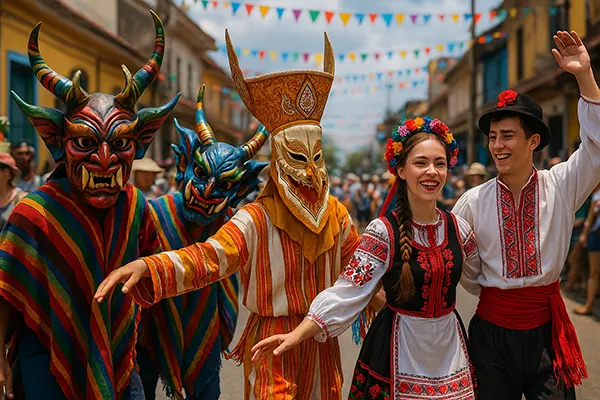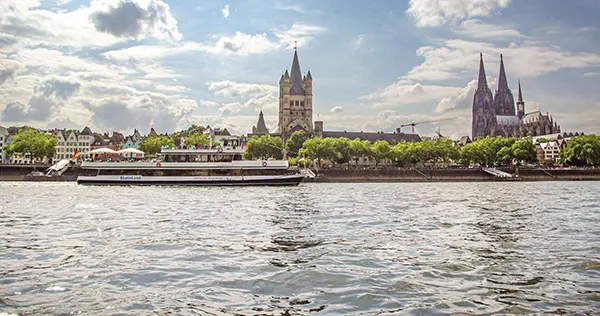
World Festivals of Emotion: Unique Cultural Events Beyond the Mainstream
Beyond the glossy brochures of major music and art events lies a vibrant and deeply authentic layer of global culture: small, often overlooked festivals that celebrate local identity, spirituality, and human connection. These unique cultural gatherings in Latin America, Southeast Asia, and the Balkans are not just events — they are emotional landscapes where visitors become participants in age-old traditions, stories, and communities. As of February 2025, these festivals offer an extraordinary glimpse into the soul of lesser-known regions.
Hidden Cultural Gems of Latin America
Latin America is rich with festivals that exist outside the typical tourist radar. One standout is the Fiesta de los Diablitos in Costa Rica, held every late December to early January. Rooted in pre-Columbian traditions, this indigenous event celebrates the resistance of the Boruca people against Spanish conquest through elaborate devil costumes and theatrical combat.
Another is the Semana Santa in Antigua, Guatemala — while technically well-known, the version in the nearby town of Quetzaltenango retains its local character. The alfombras (carpets) made from coloured sawdust, flowers, and pine needles are intricately detailed and community-made, showcasing intense spiritual devotion rather than spectacle.
In northern Argentina, the Pachamama Festival in August honours Mother Earth through offerings, dancing, and food. Unlike commercialised gatherings, these rituals are deeply intertwined with agrarian life, with participants burying food and coca leaves in symbolic gratitude to the land.
How to Take Part Respectfully
Attending these festivals means becoming part of someone else’s sacred tradition. For example, in Boruca during the Diablitos, visitors are welcomed but expected to observe respectfully, support local artisans, and avoid intrusive photography. It’s not a performance — it’s a rite.
In Quetzaltenango, locals often invite visitors to help with the alfombras. This kind of involvement fosters authentic connection, but tourists should always follow guidance from organisers or hosts and avoid interfering with spiritual moments.
Travelling to these regions is often affordable. For instance, a round trip to San José from the U.S. can cost around $500 in economy class, with local buses to Boruca available for under $20. Entrance is usually free, but supporting the event via donations or purchases is appreciated.
Southeast Asia’s Spiritual and Artistic Celebrations
Southeast Asia’s festivals reveal a mosaic of mysticism, ancestral homage, and performative arts. Thailand’s Phi Ta Khon in Dan Sai (held annually in June or July) combines ghostly folklore with Buddhist merit-making. Locals wear vibrant masks and dance through the streets, symbolising spirits returning to earth.
In Indonesia, Bali’s Galungan and Kuningan (occurring every 210 days in Balinese calendar) are visually stunning, spiritually immersive celebrations. Villages become sanctified spaces filled with penjors (decorated bamboo poles), offerings, and gamelan music. The purpose is to honour ancestral spirits believed to visit during this time.
Meanwhile, the Bun Pha Wet festival in Laos (usually in January) retells the Jataka tale of Prince Vessantara and includes temple fairs, parades, and communal storytelling — not as a tourist show, but as moral and karmic reflection deeply embedded in local life.
Practical Travel and Etiquette
To attend Phi Ta Khon, fly into Loei Airport or take a bus from Bangkok (approx. 7–8 hours). Accommodation in Dan Sai ranges from $15–40 per night. It’s advised to dress modestly, avoid alcohol near temples, and seek out community-hosted experiences.
During Galungan, tourists are encouraged to watch ceremonies but refrain from entering temples uninvited. Hiring a local guide enhances understanding and ensures respect. Costs for travel and stay are moderate, with Ubud hosting many eco-guesthouses at $30–60 per night.
Bun Pha Wet is often celebrated in smaller towns, so it’s essential to plan travel ahead. Vientiane and Savannakhet are good bases. Participation is informal but observing local customs, like bowing when entering a temple and donating during ceremonies, is courteous.

Balkan Soul: Regional Pride Through Celebration
The Balkans are home to some of Europe’s most emotionally charged festivals. One such example is the Guca Trumpet Festival in Serbia, held every August. Unlike polished music events, Guca is raw, chaotic, and joyful — a brass band battle, dance floor, and cultural statement all in one.
Another is the Lazaruvane tradition in Bulgaria during early spring. Young girls wear traditional garb and perform ritual songs and dances to ensure fertility and prosperity for their villages. It is deeply rooted in local folklore and is preserved with genuine communal pride.
In North Macedonia, the Galicnik Wedding Festival is a living ethnographic spectacle held in July, featuring traditional wedding ceremonies, songs, and costumes. Only one couple is married, but hundreds come to celebrate centuries-old customs and community storytelling.
Understanding Balkan Traditions
To join Guca Festival, fly into Belgrade and take a local bus or rideshare (approx. 4 hours). Accommodation is often in family homes or tents. Entry is free, but supporting bands by buying CDs or donating is appreciated. Bring earplugs — the trumpets never sleep.
Lazaruvane is not a centralised event, so visiting rural areas like Koprivshtitsa during springtime is essential. Respect involves asking before filming or photographing, especially children. Engage through local homestays and village tours.
For Galicnik Wedding, travel from Skopje to Mavrovo National Park, where Galicnik village is located. Hotels are scarce, but bookings can be arranged in advance. Participation is primarily observational but open-hearted celebration is welcome — dancing is encouraged!






